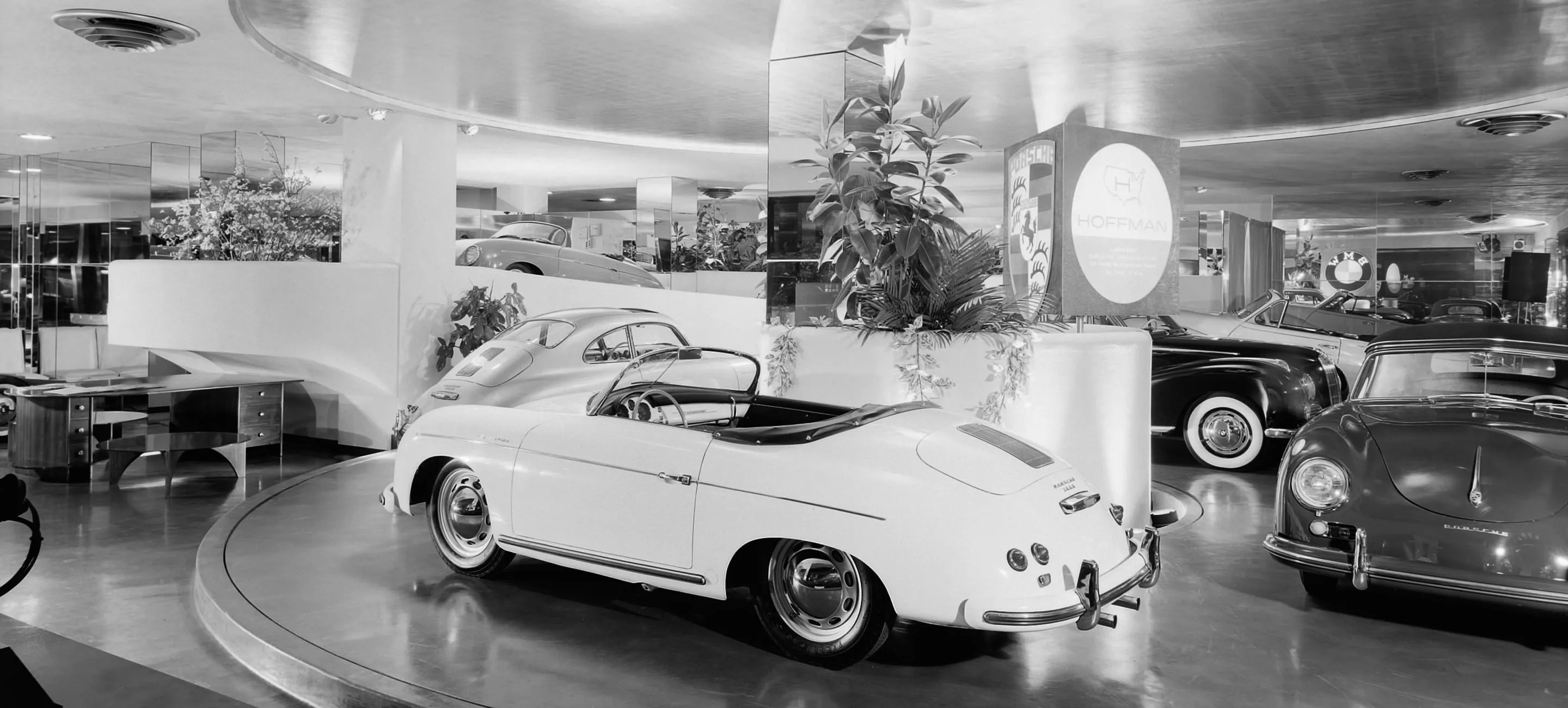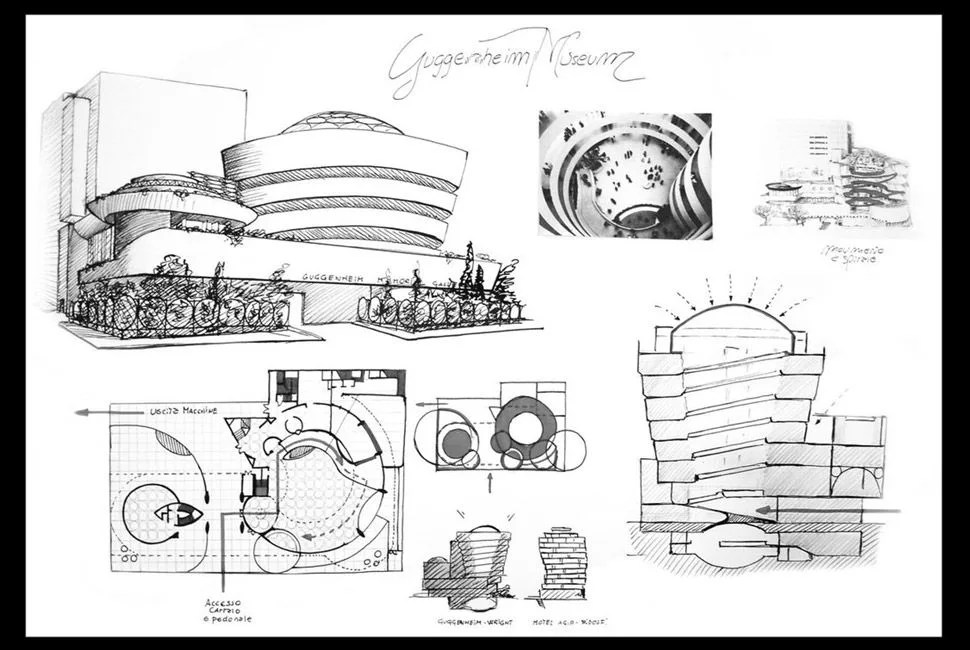In the early 20th century, the citizens of Oak Park, Illinois were terrorized by “The Yellow Devil,” a 45 horsepower Stoddard-Dayton sports car painted yellow with brown seats and brass trim. Behind the wheel was famed American architect Frank Lloyd Wright, clad in a linen duster and driving goggles, speeding around Oak Park at speeds up to 60 mph.
Wright was one of the 20th century’s biggest automotive obsessives, owning more than 80 vehicles in his lifetime. The Yellow Devil was just the first of many cars to enter Wright’s collection, alongside manufacturers like Bentley, Mercedes, Jaguar and Cadillac. Wright was enthralled with both speed and — more importantly — the design of the automobile. In his autobiography he said of his 1929 Cord L-29, “It looked becoming to my houses,” and Wright’s obsession for the car and its design would serve as inspiration for some of his greatest works.
Around the same time Wright was terrorizing Oak Park in his Stoddard-Dayton, he was working on one of his most important early works: the Robie House. Engineer Fredrick C. Robie, assistant manager at the Excelsior Supply Company, a bicycle company delving into the growing world of automobile manufacturing, contacted Wright to work on his home. The two immediately clicked on a personal level, no doubt a result of their shared interest in automobiles. Robie said of Wright, “When I talked in mechanical terms, he talked and thought in architectural terms. I thought, ‘he was in my world.’”
Due to Robie’s automotive enthusiasm, Wright incorporated a three-car garage into the design of the house itself, comprising a majority of the ground floor. The garage itself featured an area for washing cars as well as a pit for working on engines (later, Wright added an enclosed garage space with fuel pumps to his own Oak Park domicile). In 1909, the year the house was completed, most cars were kept separate from the homes of their owners (sometimes in existing horse barns or stables). The Robie House became one of the first American homes to incorporate a garage into the design.
Wright dubbed the “carport,” a minimalist automotive shelter that would become more utilized not just in Wright’s designs, but in other home designs later in the 20th century.
In the mid-’30s, when the proliferation of the automobile meant that more Americans could own their own car, Wright incorporated car culture into his Usonian homes, small one-story houses aimed at middle-income families. Since an incorporated garage proved to be too expensive for the Usonian homes, Wright turned to a more minimalist structure. When building the first Usonia house, the Jacobs House, he said to his client, “A car is not a horse, and it doesn’t need a barn. Cars are built well enough now so that they do not require elaborate shelter.” The result was what Wright dubbed the “carport,” a minimalist automotive shelter that would become more utilized not just in Wright’s designs, but in other home designs later in the 20th century.


